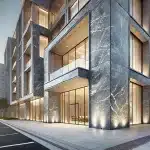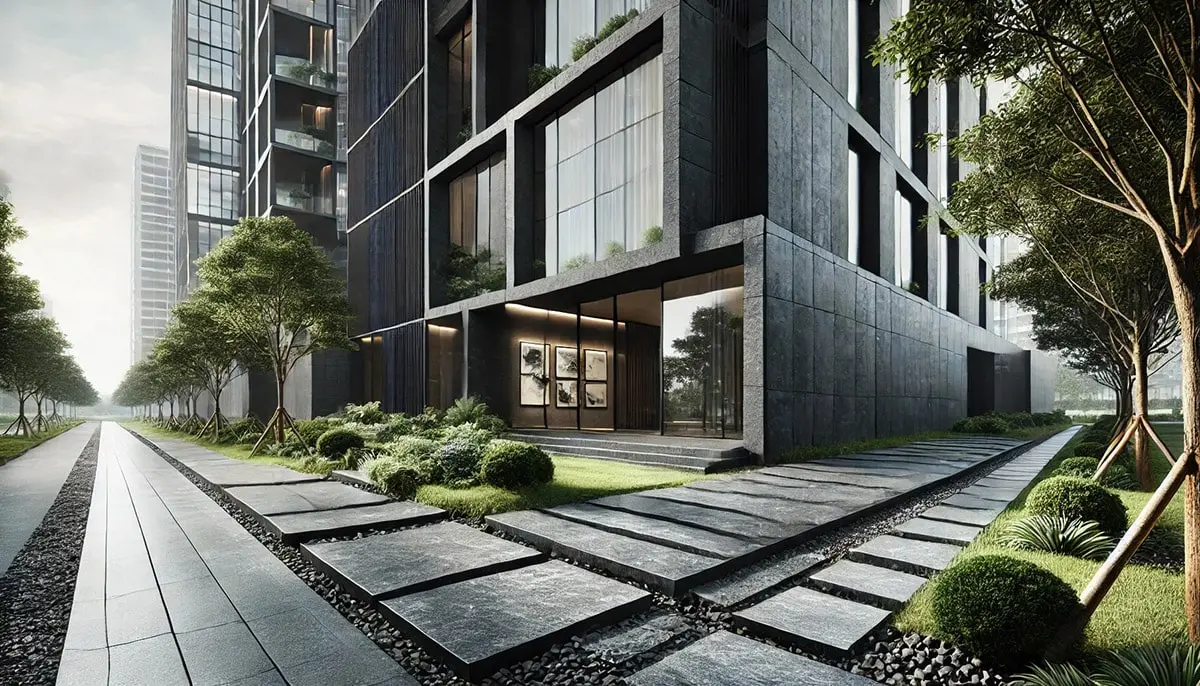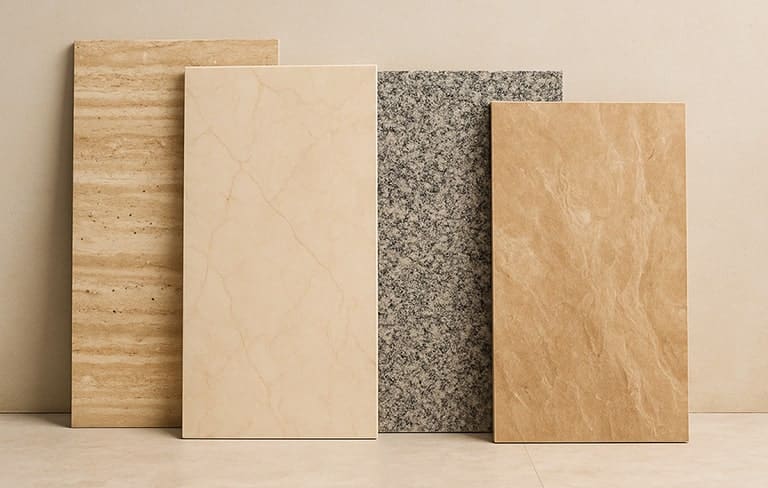
The Symbolic and Functional Role of Stairs in Architecture
2025-02-08
The best-selling travertine stones of 2024
2025-03-01The Use of Basalt Stone in Modern Architecture
Basalt is an igneous rock primarily composed of iron and magnesium silicates, typically found in dark shades such as gray, dark green, and black. It is formed from volcanic eruptions, and due to the rapid cooling of molten material, it develops a dense and durable structure.
Characteristics of Basalt Stone
1. High Resistance to Pressure and Wear
One of the most important properties of basalt stone is its exceptional strength and resistance to pressure and wear. This makes it an ideal choice for areas with high foot traffic, such as urban pavements and building facades.
2. Heat and Weather Resistance
Due to its volcanic nature, basalt is highly resistant to temperature fluctuations, heat, and moisture. This characteristic makes it a suitable material for modern building facades that require durability against environmental conditions.
3. Variety of Colors and Aesthetic Appeal
Basalt is available in a range of natural colors from earthy tones to black and gray, making it a versatile choice for architectural designs and material combinations.
4. Durability and Longevity
Basalt is highly resistant to rain, snow, sunlight, and other environmental factors, ensuring a long lifespan without significant wear or color changes.
5. Resistance to Stains and Pollution
The dense surface of basalt stone prevents the absorption of dirt and stains, making it easy to clean and maintain, even in outdoor environments.
Applications of Basalt Stone in Modern Architecture
1. Building Facades
Basalt is widely used in building exteriors due to its strength and natural beauty. It is an excellent material for residential, commercial, and office buildings, adding both durability and an elegant appearance.
2. Urban Pavements and Walkways
Thanks to its high resistance to wear and pressure, basalt is commonly used in public spaces such as streets, sidewalks, and parks, ensuring longevity in high-traffic areas.
3. Decorative Interior and Exterior Walls
Basalt is also utilized for decorative wall designs, adding a luxurious and modern touch to both interiors and exteriors. It is fire-resistant and moisture-resistant, making it a practical choice for architectural applications.
4. Stairs and Edges
With its smooth yet durable surface, basalt is an excellent choice for stairs, handrails, and building edges, offering both safety and aesthetic appeal.
5. Landscaping and Outdoor Spaces
Basalt is frequently used in landscaping projects for gardens, courtyards, and park designs, offering natural beauty and durability against various weather conditions.
Advantages of Using Basalt Stone in Modern Architecture
1. Long-Lasting Durability
Basalt is one of the most durable natural stones, maintaining its quality and appearance for years without deterioration.
2. Easy Maintenance
Thanks to its dense surface, basalt requires minimal maintenance and is highly resistant to stains and pollutants.
3. Unique Aesthetic Appeal
The natural dark tones of basalt add a sophisticated and modern touch to architectural designs, blending well with various styles and materials.
4. Eco-Friendly and Sustainable
Basalt is a naturally occurring and recyclable material, making it an environmentally friendly choice for sustainable architectural projects.
Conclusion
Basalt stone is an ideal material for modern architecture due to its high resistance, durability, natural beauty, and environmental sustainability. Its applications in facades, pavements, decorative walls, and landscaping offer both aesthetic and functional benefits. Using basalt in architectural projects provides a perfect balance of strength, elegance, and sustainability, making it a preferred choice for architects and designers seeking long-lasting and stylish solutions.





